Extension tubes on macro lens effect on focusing distance
Mar 19, 2017 18:16:17 #
OK, I have a nikon 40mm micro (macro) f2.8 . . . If I put extension tunes on it will my focusing distance be closer or farther. It focuses 1:1 at about 5 inches which is fine for flowers, but I'd like to be able to back off a bit for insects. Camera body is D5500 (DX) . . . Thanks . . .
Mar 19, 2017 18:19:49 #
AK Grandpa wrote:
OK, I have a nikon 40mm micro (macro) f2.8 . . . If I put extension tunes on it will my focusing distance be closer or farther. It focuses 1:1 at about 5 inches which is fine for flowers, but I'd like to be able to back off a bit for insects. Camera body is D5500 (DX) . . . Thanks . . .
Then you need to look for a lens with a longer focal length!
Mar 19, 2017 18:29:38 #
Mar 19, 2017 20:34:50 #
AK Grandpa wrote:
OK, I have a nikon 40mm micro (macro) f2.8 . . . If I put extension tunes on it will my focusing distance be closer or farther. It focuses 1:1 at about 5 inches which is fine for flowers, but I'd like to be able to back off a bit for insects. Camera body is D5500 (DX) . . . Thanks . . .
Extension tubes sole purpose is to reduce the minimum focus distance to allow you to get CLOSER to your subject and get a higher magnification from the lens.
For insects you need a much longer focal length, there are many choices from 150, to 180, to 200mm that give 1:1 macro at 15-18 inches.
Mar 19, 2017 21:50:13 #
The cover of the Kodak Publication Photomacrography is a little beetle photographed to fill a 4x5 sheet of film in color, with great sharpness. They used a 25mm f2.8 Kodak Cine lens with an adapter to fit 4x5 camera lensboard. I got one like it with adapter to Copal #1 sized hole in lensboard, custom made by S K Grimes, but this will fit my Canon 650D using an adapter to M42 and another adapter to EF mount. The cannon extension tubes will accept that. I have not used it yet, but this reminds me that I must try it. Since it is recommended that the lens be reversed, Grimes made the adapter to accept the front of the lens. The lens is short, which increases the magnification (but, as you say, decreases the lens-to-subject distance). Kodak used a vertical stand for the beetle (deceased) and lit it with microscope lights. This lens is so short that mounting it right on the camera using the adapters, without extension tubes, would already make it macro (about 1:1 magnification).
However, unless you have a particular application you want, there is much to be said for using whatever you have, substituting technique for a lot of equipment. If bugs in the wild (alive) are your prey a good choice is a 100mm prime macro lens--even longer would give more working distance. At the same time, the longer focal length both gives and takes away. The longer the lens (giving you more working distance), the more it magnifies movement of camera and subject, even on a tripod (risking blur or requiring shorter shutter speeds). If you make a meal of macro work, you will probably want at least two lenses for most occasions--one for speed and closer, one for distance and slower. If you travel light you can get away with adapting what you have (even using close-up filters on any good lens if the tubes become a nuisance).
However, unless you have a particular application you want, there is much to be said for using whatever you have, substituting technique for a lot of equipment. If bugs in the wild (alive) are your prey a good choice is a 100mm prime macro lens--even longer would give more working distance. At the same time, the longer focal length both gives and takes away. The longer the lens (giving you more working distance), the more it magnifies movement of camera and subject, even on a tripod (risking blur or requiring shorter shutter speeds). If you make a meal of macro work, you will probably want at least two lenses for most occasions--one for speed and closer, one for distance and slower. If you travel light you can get away with adapting what you have (even using close-up filters on any good lens if the tubes become a nuisance).
Mar 19, 2017 21:50:52 #
Mar 19, 2017 21:51:23 #
Mar 20, 2017 00:02:43 #
"...I'd like to be able to back off a bit for insects..." Been there AK Grandpa and trust me... the minimum focusing distance decreases when a lens is used with extension tubes, period! Extension Tubes are not the answer you are looking for... The only adjunct that could play into the mix is a Teleconverter which alters the angle of view thereby increasing the minimum focusing distance... I use the Kenko Teleplus PRO 300 DGX 1.4x AF Teleconverter for Nikon on my 180mm to obtain a 250mm angle of view albeit at the loss of one stop... However Kenko does not support this on optics shorter than 100mm (but many folks don't listen and get it to work with lesser focal lengths) you've been warned...
So you wanta shoot bugs? Then seriously pony up for the AF micro Nikkor 200mm f/4D IF ED which is the cat's whiskers for insects... You can pick up a previously owned model at a reduced price (they are built like a tank, virtually indestructible when compared with an 18-55mm kit lens)... But it needs a body with screwdriver AF drive... Don't think your D5500 is an option unless you want to use MF...
Oh, That AF-S 40mm f/2.8G has just as high of acuity and resolution as the 200mm monster... I have both and I'm amazed at how fantastic that 40mm is... I use it for copying slides and for location full length editorial fashion... razor sharp, flat field sharp and almost no CA or distortion but the 200mm is a little better there... however the 40mm is feather light and the 200mm weighs a ton...
Now more good news... The 200mm f/4D mates well with Kenko Teleplus PRO 300 DGX 1.4x and AF works and EXIF info is correctly passed however the bad news is your 5500 can only MF with the older "D" lens... So you should maybe consider the AF-S 105mm micro or move up to a prosumer body like a D7200.
Or you can cheat like a colleague mine who catches the bugs, puts the criters in his frig and once their chilled takes them out and shoots them with studio lighting... See there is more than one way to skin that cat...
Ok here is an example of the 200mm f/4D micro with both a D3x and a D7000
For the D7000 image I had to back it off 1.5 the distance since the angle of view changed...
but keep in mind the lens focal length remain the same...
Hope this helps AK Grandpa or is at least food for thought...
Macro/micro is an entire universe inside of our universe...
So much fun getting lost there... enjoy :)
So you wanta shoot bugs? Then seriously pony up for the AF micro Nikkor 200mm f/4D IF ED which is the cat's whiskers for insects... You can pick up a previously owned model at a reduced price (they are built like a tank, virtually indestructible when compared with an 18-55mm kit lens)... But it needs a body with screwdriver AF drive... Don't think your D5500 is an option unless you want to use MF...
Oh, That AF-S 40mm f/2.8G has just as high of acuity and resolution as the 200mm monster... I have both and I'm amazed at how fantastic that 40mm is... I use it for copying slides and for location full length editorial fashion... razor sharp, flat field sharp and almost no CA or distortion but the 200mm is a little better there... however the 40mm is feather light and the 200mm weighs a ton...
Now more good news... The 200mm f/4D mates well with Kenko Teleplus PRO 300 DGX 1.4x and AF works and EXIF info is correctly passed however the bad news is your 5500 can only MF with the older "D" lens... So you should maybe consider the AF-S 105mm micro or move up to a prosumer body like a D7200.
Or you can cheat like a colleague mine who catches the bugs, puts the criters in his frig and once their chilled takes them out and shoots them with studio lighting... See there is more than one way to skin that cat...
Ok here is an example of the 200mm f/4D micro with both a D3x and a D7000
For the D7000 image I had to back it off 1.5 the distance since the angle of view changed...
but keep in mind the lens focal length remain the same...
Hope this helps AK Grandpa or is at least food for thought...
Macro/micro is an entire universe inside of our universe...
So much fun getting lost there... enjoy :)
Macro Photography: Chronometer w/ 200mm micro Nikkor on a D3x
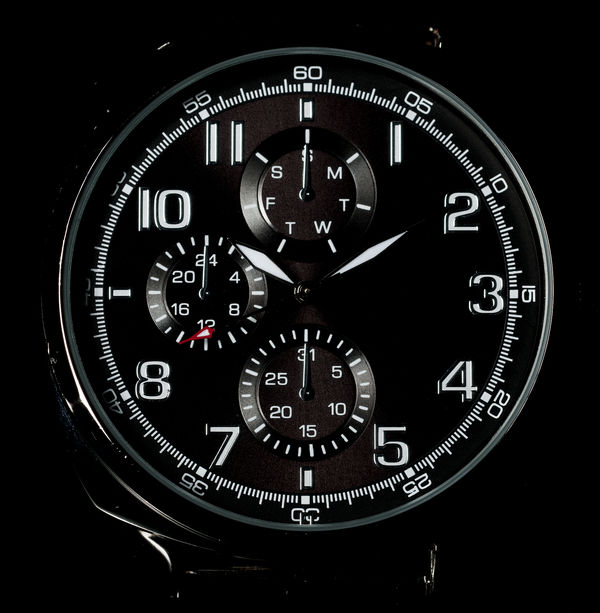
(Download)
Macro Photography: Chronometer w/ 200mm micro Nikkor on a D7000
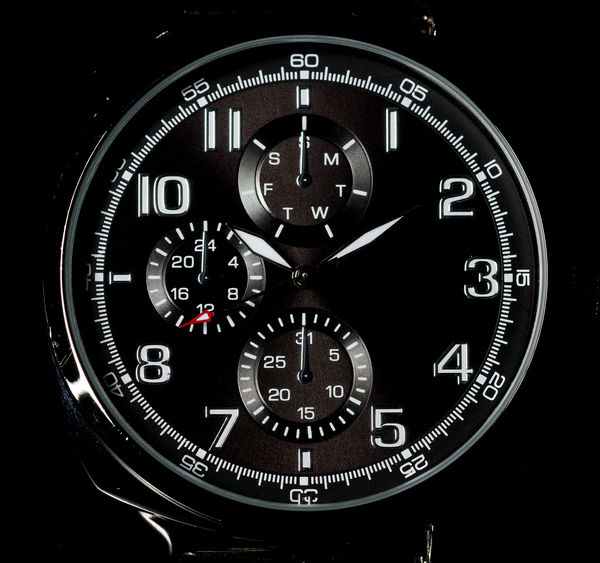
(Download)
Mar 20, 2017 07:13:40 #
AK Grandpa wrote:
OK, I have a nikon 40mm micro (macro) f2.8 . . . If I put extension tunes on it will my focusing distance be closer or farther. It focuses 1:1 at about 5 inches which is fine for flowers, but I'd like to be able to back off a bit for insects. Camera body is D5500 (DX) . . . Thanks . . .
A lot depends on how much you wish to spend on a macro lens. I have had four over the years - Canon 50mm, Canon 100mm f2.8L IS, Olympus 60mm f2.8 and my latest, and I think greatest, a Sigma 180mm f2.8 OS macro. The 180mm provides 1:1 at 47cm/18.5 inches. I chose it over the Nikkor 200mm f4 because it has image stablisation, whereas the Nikkor does not (I also have a Sigma 1.4 TC designed to fit the 180mm). I handhold a lot of my shots so IS is an important factor for me. The drawbacks with such large lenses are weight and cost. Brand new, the Sigma costs £1300.00, but I bought a mint condition used copy for £800. Last year, prior to purchasing the 180mm, I used my Olympus 300mm f4 + 1.4 TC and my Nikkor 300mm f4 PF VR + 1.4 TC to take close up (not macro) shots of insects, in preference to my 60mm macro lens. Those two lenses enabled me to stand off from the subject but at the same time obtain good images.
Mar 20, 2017 08:34:06 #
Jerrin1, I have a question.
"The 180mm provides 1:1 at 47cm/18.5 inches." I understand that on a view camera, a 180mm lens gives 1:1 magnification at 360mm extension from the film or sensor. But what do you mean in terms of digital cameras with focusing lenses? I assume you are not using the lens on that much extension (tubes)? (And 470mm would give more than 1:1...) Oh, wait--you mean subject to sensor distance, yes? If so, 18.5" is generous indeed for 1:1 on a sensor.
One other related question. When a macro lens is used in macro mode (distance), the exposure is still good because it is metered through the lens (and the effective aperture). So if you have an f2.8 macro lens, in macro mode (distance) the max aperture becomes effectively f5.8 (two stops smaller) both for exposure and for depth of field; and the camera accommodates this for correct exposure. Doesn't this mean that in macro 1:1 shooting, stopping down to a (usually safe) f16 would actually be shooting at f32--with serious diffraction softness on a small sensor when enlarged?
"The 180mm provides 1:1 at 47cm/18.5 inches." I understand that on a view camera, a 180mm lens gives 1:1 magnification at 360mm extension from the film or sensor. But what do you mean in terms of digital cameras with focusing lenses? I assume you are not using the lens on that much extension (tubes)? (And 470mm would give more than 1:1...) Oh, wait--you mean subject to sensor distance, yes? If so, 18.5" is generous indeed for 1:1 on a sensor.
One other related question. When a macro lens is used in macro mode (distance), the exposure is still good because it is metered through the lens (and the effective aperture). So if you have an f2.8 macro lens, in macro mode (distance) the max aperture becomes effectively f5.8 (two stops smaller) both for exposure and for depth of field; and the camera accommodates this for correct exposure. Doesn't this mean that in macro 1:1 shooting, stopping down to a (usually safe) f16 would actually be shooting at f32--with serious diffraction softness on a small sensor when enlarged?
Mar 20, 2017 09:10:02 #
rdubreuil
Loc: Dummer, NH USA
speters wrote:
Then you need to look for a lens with a longer focal length!
 At 40mm you'll have to get up the bugs butt, far too short a focal length for those types of subjects, better suited to flowers and the like that can't run away. Extension tubes are designed to reduce your focus distance, sensor to subject and lose the ability to focus at infinity. You'll need a longer focal length (recommended 100mm+) to be able to back off your subject and still get a 1:1 ratio. The addition of an extension tube on the macro will result in the same if you want to then get closer to another subject and achieve greater than 1:1 magnification. Extension tubes can also be very effective on telephoto zooms to reduce their minimum focusing distance but, again remember any time you add an extension tube to a lens it loses the ability to focus to infinity. In other words with a tube on you're in macro mode and your subject choices are limited to such, general shooting with it on is really limited due to the loss of infinity.
At 40mm you'll have to get up the bugs butt, far too short a focal length for those types of subjects, better suited to flowers and the like that can't run away. Extension tubes are designed to reduce your focus distance, sensor to subject and lose the ability to focus at infinity. You'll need a longer focal length (recommended 100mm+) to be able to back off your subject and still get a 1:1 ratio. The addition of an extension tube on the macro will result in the same if you want to then get closer to another subject and achieve greater than 1:1 magnification. Extension tubes can also be very effective on telephoto zooms to reduce their minimum focusing distance but, again remember any time you add an extension tube to a lens it loses the ability to focus to infinity. In other words with a tube on you're in macro mode and your subject choices are limited to such, general shooting with it on is really limited due to the loss of infinity.Mar 20, 2017 12:57:42 #
amfoto1
Loc: San Jose, Calif. USA
AK Grandpa wrote:
OK, I have a nikon 40mm micro (macro) f2.8 . . . If I put extension tunes on it will my focusing distance be closer or farther. It focuses 1:1 at about 5 inches which is fine for flowers, but I'd like to be able to back off a bit for insects. Camera body is D5500 (DX) . . . Thanks . . .
Extension tubes will enable the lens focus to higher magnification and CLOSER... pretty much the opposite of what you want. The increased magnification would allow you to back off a little, but the extension actually physically makes the lens longer, sort of nullifying anything you gain with increase mag.
To get greater working distance you need longer focal length.
There are several ways you can accomplish that:
Obviously, one would be to get a different lens.... a macro lens in the 90mm, 100mm or 105mm focal length would do the trick and give you greater working distance. (There are even longer 150mm, 180mm and 200mm macro lenses, but they are more difficult to hand hold, more likely to require smaller apertures in search of adequate depth of field, and thus slower shutter speeds and a tripod. At the highest magnifications, image stabilization has almost no effect.)
Another possibility would be to use a teleconverter between your 40mm lens and the camera. A teleconverter actually changes focal length, but there is some loss of light. A relatively mild 1.4X would make the lens an effective 56mm f/4 (one stop of light loss). Actually a teleconverter doesn't change the minimum focus distance of a lens... However because it does increase magnification (40% greater, with a 1.4X), for same level of magnification you would have increased working distance. A problem with adding a teleconverter is that the additional optics also cost some image quality.... how much or how little is really hard to say. That depends upon the specific lens and teleconverter combination. You'd have to give it a try or find someone who has used a particular 1.4X on the same lens you have.
A third possibility would be to add a diopter/close-up lens/filter to the front of your lens. This would increase it's magnification without changing focal length or significant light loss. But there is likely to be some significant loss of image quality. How much is hard to say... There are wide variety of qualities of diopter/close-up lenses. The cheapies will pretty much ruin image quality. Better, multi-element "diopters" are pricier, but would do less harm to IQ... though there still would be some loss. And, much like using extension tubes, some of what working distance you gain with higher magnification would be lost again to added lens length, with the diopter fitted to the front of it. (Probably not as much loss of working distance as with extension tubes, though.)
A few "bug" examples with different focal lengths:
90mm Tamron macro lens on APS-C crop sensor DSLR (left) and film/full frame (right)...

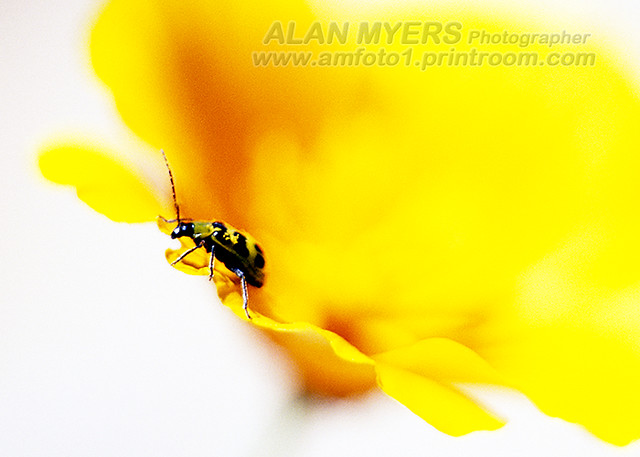
100mm Canon macro lens on APS-C crop sensor DSLR...


180mm Canon macro lens on film/full frame...

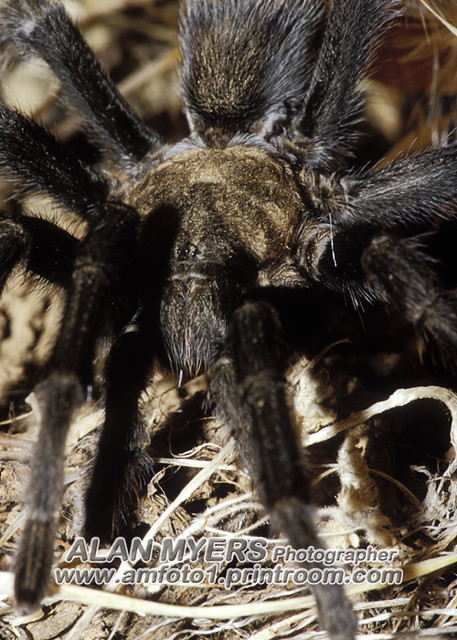
Note the super shallow depth of field in the lefthand image above, which is close to 1:1 magnification. The righthand image of the tarantula is much lower magnification.
And, as a point of comparison, 70-200mm non-macro lens with 25mm extension tube (on film/full frame)
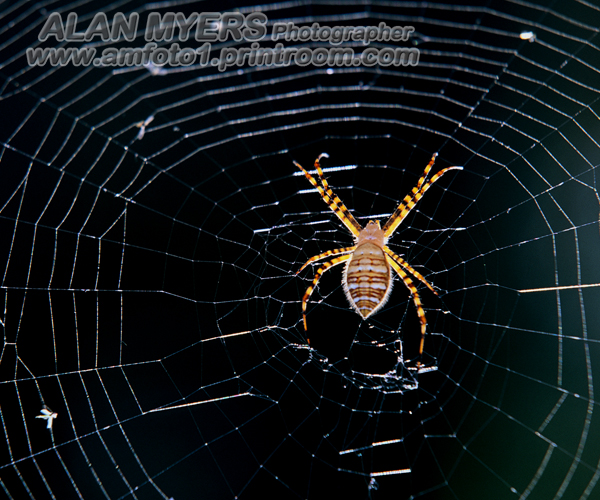
Hope this helps!
Mar 20, 2017 13:03:47 #
You make an interesting and useful point here that extension tubes can allow telephoto lenses to focus closer than they normally do. For instance, I have a Schneider 360mm tele that will not focus much closer than 8 ft. This is for 4x5 cameras, but sometimes I put the digital on the back of a 4x5 such as a Speed Graphic. In that case, the two inches of extension given by the digital camera itself is simply compensated by reducing the bellows extension on the 4x5. But as you say, this extra extension does allow focusing closer than the usual 8 ft. On a Canon APS-C camera (cropped sensor), such as mine, the 360mm would be the equivalent of a 576mm lens on regular 35mm cameras. Obviously, busy bees will not pose for this, but dead ones will.
8 ft is standard for portraits, but if you want a close-up with a long lens, an extension may be just the ticket for moving closer, and the same goes for a small object of any kind, even if it is nowhere near macro 1:1.
Schneider lenses tell you (nowadays) how close they can focus with acceptable quality (they can all focus close with bellows extension)--for instance, they boast that one of their view camera lenses today can focus to 1:3 magnification ratio. Of course you could go to 1:1, but unless you reverse the lens, the quality will not be at the peak. Schneider would recommend a lens designed for close focus for macro work, such as their Claron lenses or enlarging lenses.
8 ft is standard for portraits, but if you want a close-up with a long lens, an extension may be just the ticket for moving closer, and the same goes for a small object of any kind, even if it is nowhere near macro 1:1.
Schneider lenses tell you (nowadays) how close they can focus with acceptable quality (they can all focus close with bellows extension)--for instance, they boast that one of their view camera lenses today can focus to 1:3 magnification ratio. Of course you could go to 1:1, but unless you reverse the lens, the quality will not be at the peak. Schneider would recommend a lens designed for close focus for macro work, such as their Claron lenses or enlarging lenses.
Mar 21, 2017 02:58:07 #
AK Grandpa wrote:
OK, I have a nikon 40mm micro (macro) f2.8 . . . If I put extension tunes on it will my focusing distance be closer or farther. It focuses 1:1 at about 5 inches which is fine for flowers, but I'd like to be able to back off a bit for insects. Camera body is D5500 (DX) . . . Thanks . . .
To put it simply Yes it will shorten the focus distance.
Mar 22, 2017 21:26:31 #
Good advice here, and even some nice pictures! I used extension tubes and lived with very close focusing distances for a couple years, photographing insects almost exclusively. I sure lost a lot of shots, since the more flighty insects (dragonflies, hunting wasps, etc.) would not let me get close enough. But many just ignored me. Lots of interesting insects are not going to run or jump or fly.
Anyway, extension tubes were a great learning experience for me, and I never regretted it. The ones that get away are not all the best ones.
Anyway, extension tubes were a great learning experience for me, and I never regretted it. The ones that get away are not all the best ones.
If you want to reply, then register here. Registration is free and your account is created instantly, so you can post right away.







